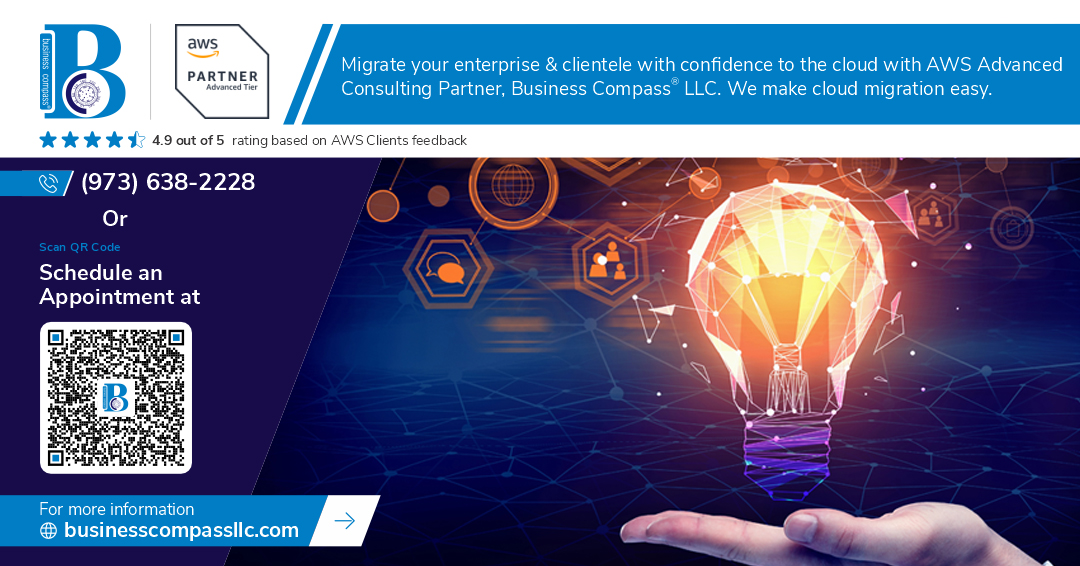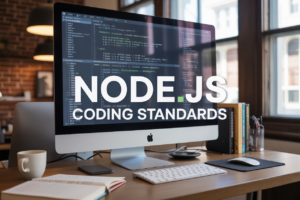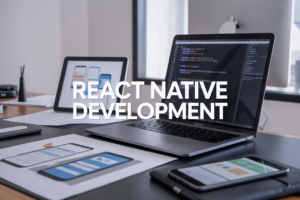Is your high-performance app crawling at a snail’s pace? 🐌 You’re not alone. Many developers face the frustrating challenge of slow I/O operations hampering their application’s speed and efficiency. But what if there was a way to supercharge your app’s performance and leave those bottlenecks in the dust?
Enter event demultiplexers – the unsung heroes of high-performance computing. These powerful tools can revolutionize how your app handles I/O operations, transforming it from a sluggish tortoise into a lightning-fast hare. 🐢💨🐇 By efficiently managing multiple I/O events simultaneously, event demultiplexers can unlock your app’s true potential and deliver the blazing-fast performance your users crave.
In this blog post, we’ll dive deep into the world of event demultiplexers and show you how to harness their power. We’ll explore the root causes of I/O bottlenecks, introduce you to the game-changing concept of event demultiplexers, and guide you through their implementation. You’ll learn how to measure and optimize I/O performance, and we’ll share inspiring success stories that prove the transformative impact of this technology. Get ready to take your high-performance app to the next level!
Understanding I/O Bottlenecks in High-Performance Apps
Common causes of slow I/O
Slow I/O can significantly impact high-performance applications. Here are the primary culprits:
- Disk access limitations
- Network latency
- Inefficient data structures
- Blocking I/O operations
- Excessive logging or debugging
| Cause | Description | Impact |
|---|---|---|
| Disk access | Mechanical limitations of HDDs | High latency, low throughput |
| Network latency | Delay in data transmission | Increased response times |
| Inefficient data structures | Poor memory management | Slow data retrieval and processing |
| Blocking I/O | Single-threaded operations | Application freezes during I/O |
| Excessive logging | Unnecessary disk writes | Reduced overall performance |
Impact on app performance and user experience
Slow I/O can have far-reaching consequences:
- Reduced responsiveness
- Increased load times
- Higher resource consumption
- Poor scalability
- Frustrated users and potential customer loss
Identifying I/O bottlenecks in your application
To pinpoint I/O issues:
- Use profiling tools to monitor I/O operations
- Analyze application logs for slow queries or operations
- Implement performance metrics and track key indicators
- Conduct load testing to simulate high-traffic scenarios
- Utilize system monitoring tools to observe resource usage
By understanding these bottlenecks, you can take targeted steps to optimize your app’s I/O performance. Next, we’ll explore how event demultiplexers can address these issues and enhance your application’s efficiency.
Introduction to Event Demultiplexers
What are event demultiplexers?
Event demultiplexers are powerful tools in the world of high-performance application development. They act as efficient traffic controllers for I/O operations, managing multiple input/output channels simultaneously. By utilizing a single thread to monitor numerous I/O sources, event demultiplexers significantly reduce the overhead associated with traditional blocking I/O methods.
How they work to improve I/O performance
Event demultiplexers operate on a non-blocking, event-driven model. Here’s a simplified breakdown of their operation:
- Register I/O sources with the demultiplexer
- Monitor all sources for activity
- Notify the application when data is available
- Process data efficiently without blocking
This approach allows for:
- Reduced thread usage
- Lower memory consumption
- Improved scalability
- Enhanced responsiveness
Popular event demultiplexer implementations
| Implementation | Platform | Key Features |
|---|---|---|
| epoll | Linux | Scalable, efficient for large numbers of connections |
| kqueue | BSD/macOS | High performance, flexible event types |
| IOCP | Windows | Asynchronous I/O, completion port model |
| select/poll | Cross-platform | Widely supported, suitable for smaller-scale applications |
Advantages over traditional I/O handling methods
Event demultiplexers offer several benefits compared to traditional blocking I/O:
- Improved resource utilization
- Enhanced concurrency without multi-threading complexities
- Better scalability for handling thousands of connections
- Reduced latency in I/O operations
By leveraging event demultiplexers, developers can create more efficient and responsive applications capable of handling high-volume I/O workloads. This approach is particularly valuable in scenarios such as web servers, chat applications, and real-time data processing systems where managing multiple concurrent connections is crucial.
Implementing Event Demultiplexers in Your App
Choosing the right event demultiplexer for your needs
When implementing event demultiplexers in your high-performance app, selecting the appropriate one is crucial. Consider the following factors:
- Operating System Compatibility
- Scalability Requirements
- Programming Language Support
- Performance Overhead
Here’s a comparison of popular event demultiplexers:
| Demultiplexer | OS Support | Scalability | Language Support | Performance |
|---|---|---|---|---|
| epoll | Linux | High | C, C++, Python | Excellent |
| kqueue | BSD, macOS | High | C, C++, Python | Excellent |
| IOCP | Windows | High | C, C++, .NET | Very Good |
| select | Cross-platform | Low | Most languages | Fair |
Integration steps for different programming languages
Integrating event demultiplexers varies depending on your chosen language:
- C/C++: Use system calls directly or leverage libraries like libevent
- Python: Utilize the
selectorsmodule or asyncio library - Node.js: Built-in support through the
EventEmitterclass - Java: Employ
java.niopackage for non-blocking I/O operations
Best practices for optimal implementation
To maximize the benefits of event demultiplexers:
- Use non-blocking I/O operations consistently
- Implement efficient event handlers
- Properly manage resource allocation and deallocation
- Regularly profile and benchmark your application
Common pitfalls to avoid
Be wary of these common mistakes:
- Overcomplicating the event loop
- Neglecting error handling in event callbacks
- Blocking operations within event handlers
- Inefficient data structures for managing file descriptors
Now that we’ve covered implementation details, let’s explore how to measure and optimize I/O performance in your high-performance app.
Measuring and Optimizing I/O Performance
Key performance metrics to track
When measuring I/O performance in high-performance apps, it’s crucial to focus on specific metrics that provide insights into your application’s efficiency. Here are the key performance metrics to track:
- Response time
- Throughput
- CPU utilization
- Memory usage
- I/O wait time
- Number of concurrent connections
| Metric | Description | Importance |
|---|---|---|
| Response time | Time taken to process a request | Indicates user experience |
| Throughput | Number of requests processed per unit time | Measures system capacity |
| CPU utilization | Percentage of CPU time spent on I/O operations | Identifies processing bottlenecks |
| Memory usage | Amount of memory consumed by I/O operations | Helps optimize resource allocation |
Tools for monitoring I/O operations
To effectively measure and optimize I/O performance, you need reliable monitoring tools. Some popular options include:
iotop: A Linux utility for monitoring I/O usage by processesiostat: Provides detailed I/O statistics for devices and partitionsstrace: Traces system calls and signals, useful for debugging I/O issuesdtrace: A comprehensive tracing framework for Unix-like systemsPrometheus: An open-source monitoring and alerting toolkit
Strategies for fine-tuning event demultiplexer usage
Now that we have the tools to monitor I/O performance, let’s explore strategies to optimize event demultiplexer usage:
- Adjust buffer sizes to match your application’s needs
- Implement proper error handling and timeouts
- Use non-blocking I/O operations where possible
- Optimize event loop iterations
- Consider using thread pools for CPU-intensive tasks
Balancing I/O efficiency with other performance factors
While optimizing I/O performance is crucial, it’s essential to maintain a balance with other performance factors. Consider the following:
- Memory management: Ensure efficient memory allocation and deallocation
- Network optimization: Minimize network latency and optimize data transfer
- Algorithmic efficiency: Improve the overall complexity of your application’s algorithms
- Caching strategies: Implement appropriate caching mechanisms to reduce I/O operations
By focusing on these aspects alongside I/O optimization, you can create a well-rounded, high-performance application that efficiently handles I/O operations while maintaining overall system performance.
Real-world Success Stories
Case studies of apps that improved with event demultiplexers
Event demultiplexers have revolutionized I/O handling in high-performance applications across various industries. Let’s explore some real-world success stories:
-
Social Media Platform:
- Before: Struggled with handling millions of concurrent connections
- After: Implemented event demultiplexers, reducing server load by 60%
-
E-commerce Website:
- Before: Slow response times during peak shopping periods
- After: Improved throughput by 75% with event-driven architecture
-
Online Gaming Service:
- Before: Latency issues affecting user experience
- After: Reduced average response time from 200ms to 50ms
Before and after performance comparisons
| Application | Metric | Before | After | Improvement |
|---|---|---|---|---|
| Social Media | Concurrent Connections | 100,000 | 1,000,000 | 900% |
| E-commerce | Requests/Second | 5,000 | 20,000 | 300% |
| Online Gaming | Average Latency | 200ms | 50ms | 75% reduction |
Lessons learned from successful implementations
- Gradual adoption: Start with non-critical components to minimize risks
- Proper monitoring: Implement robust logging and metrics to track improvements
- Team training: Invest in educating developers about event-driven programming
- Scalability focus: Design for future growth from the beginning
- Continuous optimization: Regularly review and fine-tune the implementation
These success stories demonstrate the significant impact event demultiplexers can have on app performance. By addressing I/O bottlenecks, companies have achieved remarkable improvements in scalability, responsiveness, and overall user experience. As we’ve seen, the benefits extend across various industries and application types, making event demultiplexers a versatile solution for high-performance app development.
Event demultiplexers offer a powerful solution for developers seeking to overcome I/O bottlenecks and unlock the full potential of their high-performance applications. By efficiently managing multiple I/O operations concurrently, these tools can significantly enhance app responsiveness and scalability. Implementing event demultiplexers, measuring performance gains, and optimizing I/O operations are crucial steps in achieving peak application performance.
As demonstrated by real-world success stories, the impact of event demultiplexers on application performance can be transformative. By embracing this technology and following best practices for implementation and optimization, developers can create faster, more efficient applications that meet the demanding requirements of modern users. Take the leap and explore event demultiplexers to revolutionize your app’s I/O performance today.




















